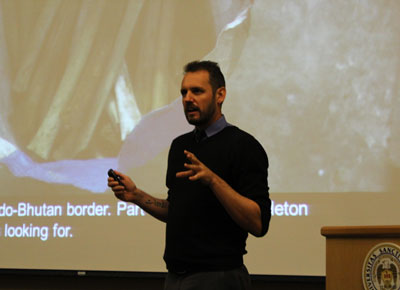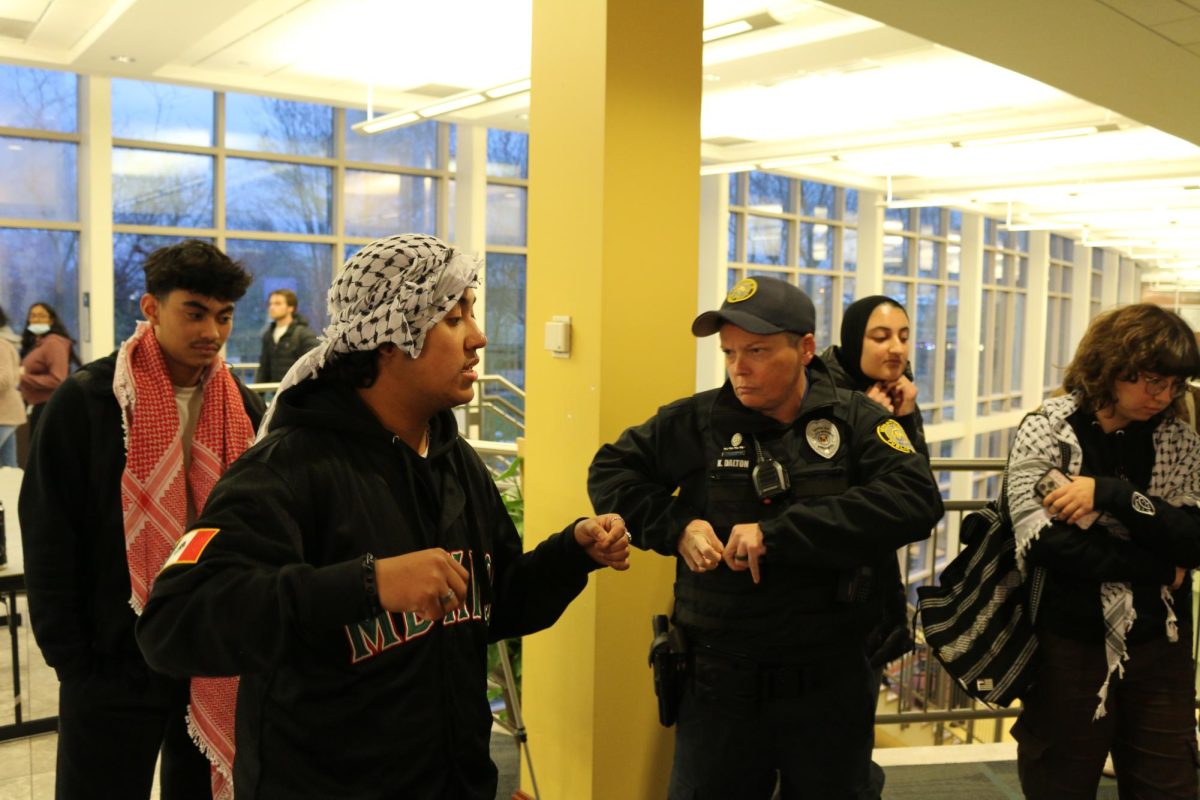Investigative journalist Scott Carney began his speech on Nov. 28 saying that he likes talking to college students for a very specific reason. 
“It’s always an honor to speak in front of college students,” Carney said. “Especially since you’re getting to these issues before you get horribly jaded by them.”
Carney was brought to Saint Louis University by the Great Issues Committee to speak about his book, “The Red Market.” He spent roughly six years researching and traveling for the story, and said that the Red Market can be summed up in a simple quote from anthropologist Richard Titmuss.
“If blood as a living human tissue is increasingly bought and sold as an article of commerce and profit improves from such transactions, that follows that the laws of commerce must in the end prevail,” Titmuss said.
The Red Market is the trade of not only human body parts, but also human people as commodities. Carney’s book explores these markets, ranging from the sale of organs to the sale of children, and exposes just how prevalent and illustrious such a trade is in modern times.
Carney spoke about visiting a tsunami refugee camp in India where he saw first hand what happens when things become so desolate, the body is the only thing a person has left. In the camp, every woman in residence had sold a kidney.
This is not an isolated incident, according to Carney, and it manifests itself across the globe in any number of ways. Despite the variety in the Red Market, Carney said that he found one thing in common among all the kinds of transactions he encountered.
“It’s taken me inside the respected glass and steel institutions of the first world, like where we are right now, and into the back dens of criminal hide outs in the third,” Carney said. “I’ve met with police and lawyers and victims and ordinary business folk just trying to make their livings and in all the markets I’ve explored, one thing has stood out: that everyone, no matter who they are, is convinced they are doing the right thing.”
From there, Carney delved into the flaws in the medical system. While a large number of body parts are in fact donated and obtained in legal ways, any excess demand is what contributes to the transactions occurring on these Red Markets. Too often, donors and recipients of body parts accept that privacy of medical records keeps them from learning where these transactions begin and end.
“Medical privacy becomes the perfect cover for some of the most despicable crimes humanity has invented,” Carney said.
Carney’s goal, however, is not a critique of medical systems. Instead, his aim is to create awareness about where the human commodities that have allowed our medicine to become so advanced come from.
The trade of human bodies is as old as the study of medicine itself. As early as the 1700s, medical students bought cadavers to study. The cadavers, it turned out, were not always obtained ethically, as some providers resorted to murder in order to have a product to sell.
When a demand for skeletons for studies arose, methods of obtaining them went oversees. The same problems of unethical production occurred and eventually, the skeleton trade was outlawed. Most producers went out of business, but a few managed to survive. It was these producers Carney meant to track down, stumbling upon his larger story in the process.
The more Carney looked into the trade of human parts, the more incarnations of the trade he found. He expanded his focus from corpses and organs to the exploitation of international adoptions. He noticed that in areas that have suffered from natural disasters or other kinds of hardship, these sorts of trades appear with greater frequency.
“In these sorts of emergencies, brokers come in,” Carney said. “With such concentrated destitution, you’ll have people who want to take advantage of that in any way they can.”
Carney’s goal with his speech was to take a mostly ignored problem and frame it as a social issue. His research is far from over, as he stated, he learns about a new market or trade practically every week.
At the end of the lecture, Carney took several questions from the audience and held a brief book signing.





